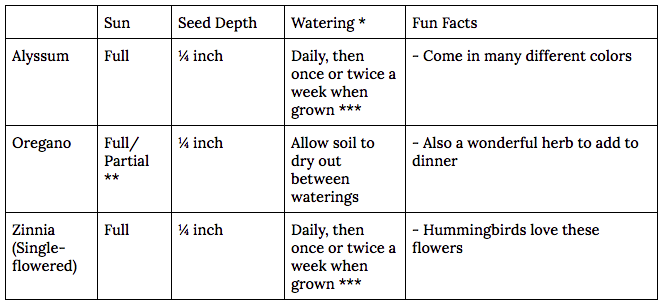A pollinator is any of the wonderful creatures that we rely on for our food, our flowers, and an abundance of other resources necessary for our welfare. Pollinators work by depositing pollen among flowers of the same species, which fertilizes the blossoms. This in turn catalyzes the formation of fruit, which contains the seeds that the plant needs in order to reproduce. Pollinators are the foundation of this natural cycle, and can come in the form of bees, butterflies, hummingbirds, bats, and more! Because we depend on these creatures for our livelihood, it’s important that we make an effort to help them, especially since the bee population is in a state of decline.
In the midst of a pandemic, you might be looking for a source of entertainment that can easily be incorporated into your daily routine and home. One activity that both helps pollinators and occupies you is planting a pollinator garden! Although gardening may seem like a daunting and dirty task, it is quite relaxing, with the added benefit of helping our natural world.
Some common, easy to grow pollinator flowers are calendula, oregano, and zinnia. These plants complement each other well, as they bloom during different seasons. This allows pollinators to have a steady supply of food throughout the year.
Here’s what you’ll need to get started:
Seed potting soil
Three pots (typically plastic with drainage holes at the bottom)
I used larger pots for the zinnia and alyssum because they do grow quite a bit
Seeds for your flowers
The Process
Label your pots
Makes it easier to keep track of the plants
Put your soil in your pots
Fill it up to where the line is (located near the top of the pot)
Sprinkle your seeds in the dirt, making sure that they are evenly spread out across the surface
Gently sprinkle some potting soil on top of the seeds until they are about a ¼ inch to ½ inch deep
Make sure not to put too much, as seeds are dependent on the sun to germinate
This is especially important for the zinnias
Each plant has its own unique set of requirements needed to grow, such as the amount of sun and water, so I’ve made a chart for the beginning gardeners.
*If it is extremely hot or you notice the soil is very dry, feel free to mist them with water, making sure that the soil is made damp again
**During hot weather, make sure your oregano doesn’t dry out by putting it in the shade after about 4-5 hours of full sunlight
***Try to keep the soil damp for young plants
Some Guidelines:
When watering, soil should be made damp, not soaking
Try to water in the morning so the plants have time to dry off before nightfall
Drainage: If the soil does not drain well, this could negatively impact your seedlings
Try to use pots with holes for draining
Deadheading: Removing the dead flowers from their stems helps make way for increased flowering and longer blooms
Avoid inorganic pesticides or herbicides
Water at the base of the plant, so as to prevent any fungus from growing on the foliage
Your plants should have sprouted and grown a bit after three to four weeks. Here’s how mine look:
Zinnias
Oregano
Alyssum







